Even in places with “good water,” what comes out of our faucets is often contaminated with a wide range of toxins, heavy metals, and trace pharmaceuticals.
The sheer volume of water-treatment options is staggering. We offer only a limited number of filtration systems in our online store because most folks need only one of a few options. We see no need to make things more confusing!
In this post I’ll tell you what you want to get out of your water, and then four filter options that will do that.
What You Want to Get Rid of
The main things we want to get out of our water are as follows:
1) Chlorine
Chlorine is used to kill many biological agents, including bacterias like cryptosporidium, giardia, and cyclospora. Chlorine is incredibly effective, but chlorine in drinking water is implicated a wide variety of health problems, from cancer and heart disease to reproductive problems and more.
2) Heavy Metals
Lead, cadmium, arsenic, chromium, mercury, and more easily bio-accumulate in our bodies and can cause serious long-term health problems.
3) Pharmaceuticals
This is a relatively new source of toxins now found in water supplies throughout the world. Pharmaceuticals pass though those who take them and are eliminated through our urine. They are flushed and later show back up in drinking water.
4) Industrial products/byproducts
DDT, Dioxins, Percholate, Hexachlorobenzene, MtBE, PCB’s, Chromium VI and many others can now be found in the water of many towns.
5) Radioactive elements
These are now showing up in some locations. If you have them, you should of course filter them out. This usually requires reverse osmosis technology.
6) Fluoride
While our recommendation has always been in favor of filtering fluoride out of your drinking water, we had, up until recently, taken a moderate stance on the issue, acknowledging the ongoing risk/benefit debate. However, this ruling/recent news on fluoride cements our stance that it is important to filter fluoride out of your water because it IS neurotoxic. If your or your child struggle with cavities, consider a fluoride toothpaste, because treatment of cavities is not without its own toxins/trauma.
7) PFAS
These “forever chemicals” are linked to serious health risks, including hormone disruption, immune system suppression, and an increased risk of certain cancers. PFAS are highly persistent in the environment and the human body, meaning even small amounts can accumulate over time. Since they’re found in tap water, food packaging, and even rainwater, filtering them out with a high-quality water filtration system is one of the best ways to reduce exposure.
If you want to know what contaminants are in your water, you can test your water with this kit.
How to Choose the Best At Home Water Filter
Obviously, we’d all like to enjoy the best water quality possible, but the world of water-filter technology is confusing to navigate. Our readers often ask: How can I quickly learn what filter is best for my family’s needs? How can I be sure the filter I bought is doing what it claims to be doing?
I’ve been researching (and testing!) various types of water filters for decades now, so I’ll try to provide you with my understanding of this issue, and help you choose the best water filter for your family.
Types of Water Filters
The most widely available and effective water filters are as follows:
-
Carbon/activated carbon filters: Activated carbon chemically bonds with and removes some contaminants in water that is filtered through it. Some carbon filters just remove chlorine and improve taste and odor, while others remove a wide range of contaminants including lead, asbestos, mercury, and volatile organic compounds (VOCs). Activated carbon cannot effectively remove common “inorganic” pollutants like fluoride, arsenic, nitrate, hexavalent chromium, and perchlorate.
There are two types of carbon filters:
a. Granulated activated carbon (GAC) filters: These filters contain fine grains of activated carbon. Typically, they are less effective than carbon block filters (see below) because they have a smaller surface area of activated carbon.
b. Carbon block filters: Carbon block filters are made from pulverized activated carbon that is compressed into blocks. They are typically more effective than granulated activated carbon filters because they have more surface area. - Ceramic filters: These do not remove chemical contaminants, but they have very small holes throughout the material that block solid contaminants such as cysts and sediments.
- Kinetic degradation fluxion (KDF) filters: KDF is a combination of copper and zinc. It creates an electro-chemical reaction. During this reaction, electrons are transferred between molecules, and new elements are created. Some harmful contaminants are changed into harmless components. Some heavy metals–such as copper, lead, mercury and others–react to plate out onto the medium’s surface, thus being effectively removed from the water supply.
- Distillation: Water is distilled by boiling it and capturing the steam. The steam cools back into water. Many substances are left behind and the resulting water is purer. Unfortunately, most of the dissolved beneficial minerals are absent in distilled water. Also, many feel that distilled water is considerably more caustic and will rob minerals from our bodies. Although this topic is robustly debated, we feel that this technology is not a good solution for filtering water when there are so many better, and less expensive, solutions.
- Mechanical filters: These filters have tiny holes that remove contaminants such as cysts and sediments. They cannot remove chemical contaminants. They filter essentially the same things that ceramic filters do.
- Reverse osmosis filters: This process pushes water through a semi-permeable membrane that blocks particles larger than water molecules. Reverse osmosis can remove many contaminants not removed by activated carbon, including arsenic, fluoride, hexavalent chromium, nitrates, and perchlorate. However, reverse osmosis does not remove chlorine, trihalomethanes, or volatile organic chemicals (VOCs). Many reverse osmosis systems include an activated carbon component than can remove these other contaminants. Quality can vary tremendously in both the membrane system and the carbon filter typically used with it. Consumers should also be aware that reverse osmosis filters use 3-to-20 times more water than they produce. They waste quite a bit of water. One exception is this RO filter.
There are other types of water filtration methods out there, but the above technologies are usually the simplest and most cost effective ways improve the water quality in your home.
What About Charcoal Filtering Bottles?
Activated carbon is a great filter medium, but usually water is forced through the charcoal by the pressure in the system. When you just drop a stick of charcoal into your water bottle and head off to yoga, there is simply not enough time for any significant filtration to occur.
Which Water Filter Is the Most Effective?
We offer two basic types of filtration systems in our store because we believe these are the best water filters.
1. KDF/GAC/PFAS/Carbon Block Filtration. These filters take care of most of the contaminants found in municipal drinking water, including PFAS chemicals. This model includes an optional fluoride filter. Requirements: A hole in your countertop. Do you live in a city? If so, you should invest in a pre-filter for your system.
2. ZIP Countertop Reverse Osmosis filter system. These filters are perfect for folks who cannot put a hole in their countertop and/or have the modern type faucet that will not connect to the KDF/GAC/carbon block countertop unit. They are also great for folks who may have radioactive elements in their water. RO gets rid of PFAS, too.
A Word About Reverse Osmosis (RO) Filtration
RO does a great job filtering water of just about everything. One of the downsides is that RO traditionally wastes 4-5 times as much water as they produce. The ZIP limits the amount of waste-water and even stores it in a special chamber so that it can be used elsewhere in the home (we use ours to water plants).
So how can we know if a particular filter manufacturer is producing effective water filters?
There are independent testing agencies that test contaminated water after it has passed through a test filter. If the filter removes all, or nearly all of the specified contaminants, it qualifies for certification. One of the best certifications is the NSF 53 Protocol. Filters that show positive results are granted certification and can be trusted, in my opinion.
The Best Water Filter for Your Bathroom
Finally, it should be noted that chlorine (found in most water supplies) is as easily absorbed through our skin as it is through our stomach. Chlorine can also become a gas when heated and thus get into our lungs when taking a steamy shower. To prevent this, it’s worth considering a shower and/or bath filter. You also might consider a whole-house water filter; we wrote a whole article about that that you may find useful!
More Information About Chromium 6
We get a lot of questions specifically about this one, so here’s the bottom line on this toxin:
- Chromium-6 is really bad stuff–a well-established carcinogen.
- California has set a maximum legal level of 10 micrograms per liter of chromium-6 (this translates to roughly ten part per billion (10ppb)). This California level is the most stringent anywhere, but they’ve set the more ambitious public health goal of .02ppb. The EPA, by the way, lacks a specific limit for chromium-6, but has set a standard of 100ppb for all forms of chromium.
- Some level of chromium-6 may be in the drinking water of two-thirds of Americans. While this is the news grabbing headlines, it’s worth noting that only 2 percent of Americans’ drinking water contains levels above 10ppb, which is still some seven million people. (You can check your area here.)
Does the Gimme Clean Water Filter Remove Chromium-6?
The KDF/GAC filters in our store indeed capture chromium hexavalent. Whew!
The testing data shows that when water passes through our filter system, the chromium-6 is reduced by at least 90 percent. In my case, this means that my New York City water, which is estimated to contain .04ppb of chromium-6, should be reduced down to .004ppb.
When water spiked with high levels of chromium-6 goes through these filters, those levels drop to exactly the same level as the California law requires. This is great, but I was happy to discover that the testing is done on filters that have already filtered 20,000 gallons of water. In other words, because we recommend that those filters be replaced after about 5,000 gallons (every year or two), the filters that were tested should have been discarded years ago, but were still functioning very well, even with large amounts of chromium-6 dumped into them. This means that if you live in an area already below California’s legal limit for chromium-6 (as 98 percent of you do), and if you replace your filter every year or so, your exposure to chromium-6 via your drinking water should be negligible–at least 90 percent lower than the unfiltered water in your area.
If you are using a different water filter, you should definitely contact the manufacturer to be sure it is reducing the chromium-6 level down to 10 micrograms per liter or less, and ideally down below .02ppb.


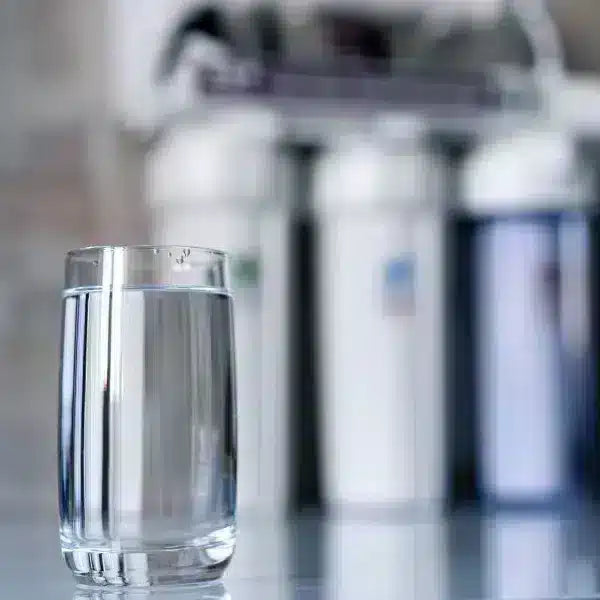









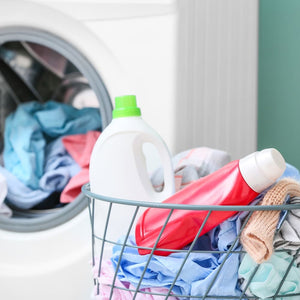
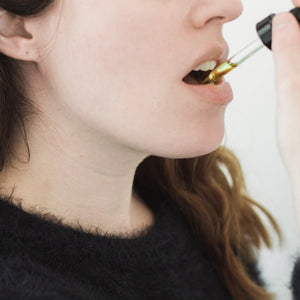
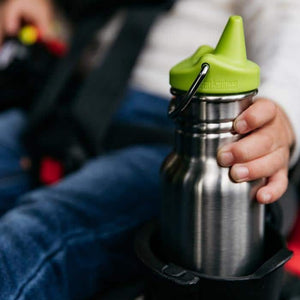





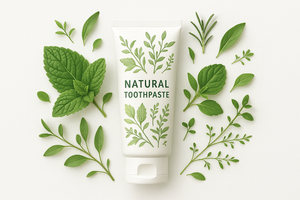
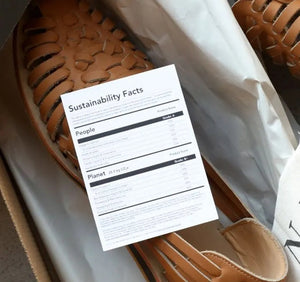

51 comments
johnlockegoss
You cannot get distilled water from a faucet. Distilled water is essentially water caught from steam. You can either purchase a distiller or you can buy distilled water at most supermarkets.
As an aside…I do not recommend that anybody ever make a habit of drinking distilled water. While it is very pure, it is not good for human consumption.
Adrienne Butler
I am looking to get distilled water from my kitchen faucet for a humidifier
Daria
Nowadays probably everyone knows how important it is to drink water. But of course, the water that you consume and use daily should be filtered and harmless for your health.
It is not the easiest tasks especially when you live in a megapolis where the sanitary standards of water are relatively lower. 6 Types of modern water filters https://cookingtopgear.com/types-of-modern-water-filters/John Goss
Hi Poppy,
A whole house air filter (and water filter) system can make a big difference. I can help you with that stuff. Because it’s a big subject it might be best to get into that stuff directly via email. john@gimmethegoodstuff.com PS I can also help you with the faucets.John here…
We can help you with the “rabbit hole” problem. :)
Poppy
Like several others, we are building a house, and I am hoping a whole house system can be effective to ease the process of filtering everything! Any thoughts would be very helpful! Also, I was researching faucets for the same reason, and got onto the topic that some faucets can leach lead, even though they are certified due to the “easy” water that they use in the process. I am definitely down a rabbit hole there, but do you know anything about that topic? Does filtering the water help reduce any leeching? I started to get that feeling of I can never win, if I filter the water, only to have it come through the tap and pick up lead! Any thoughts are most helpful – I do know there were some changes in regulations that were supposed to help with this with the composition of the metal and perhaps the manufacturing technique reducing the potential for lead. Finally, on another tangent, I found that there are many certifications faucet manufacturers need to get, and some have only the basics, where others have all of them …. did you look into any of this when you were doing your Lancaster house remodel and have any potential tips? Thanks for your site! I knew Maia when we were in NYC! Miss it there very much!